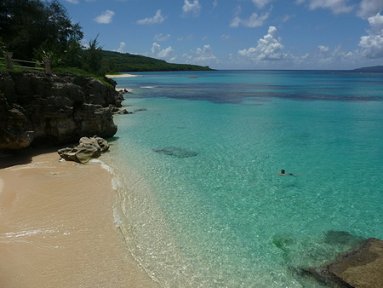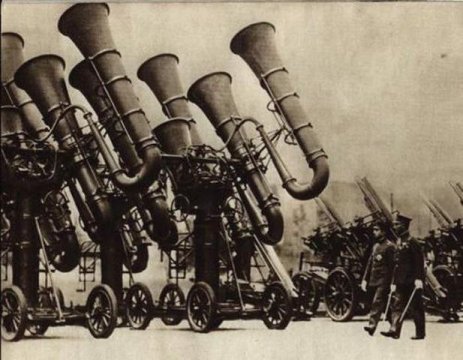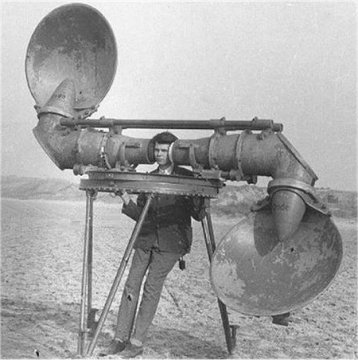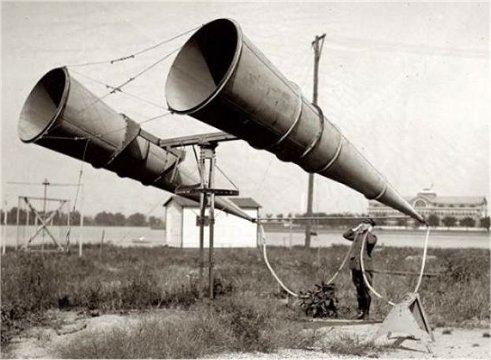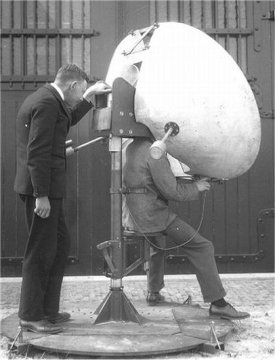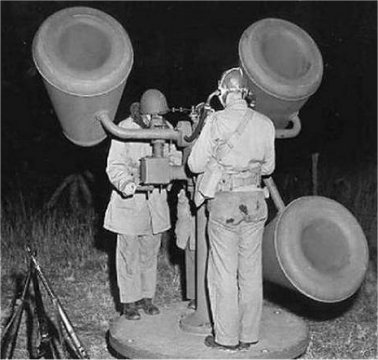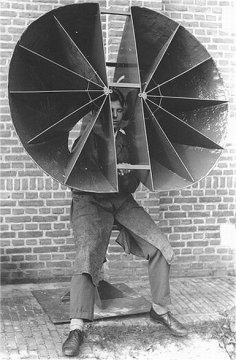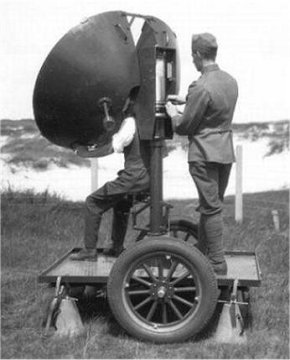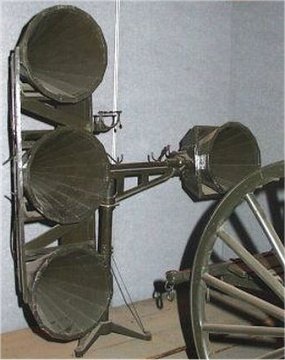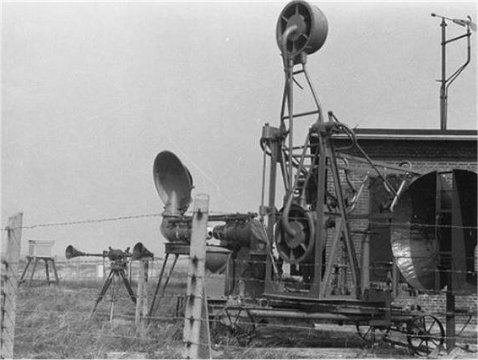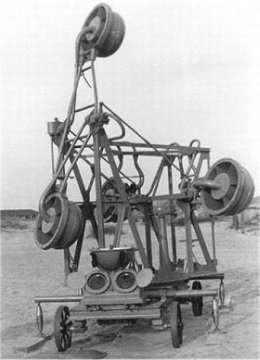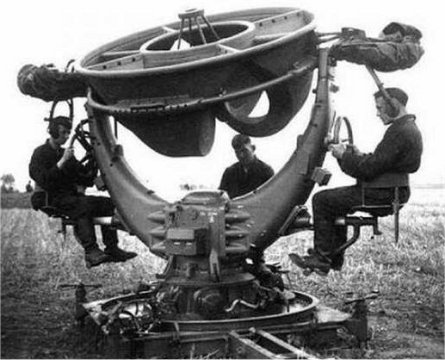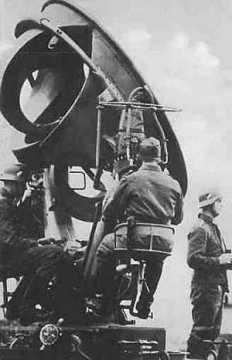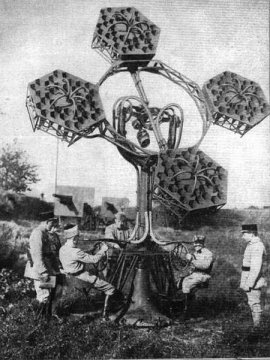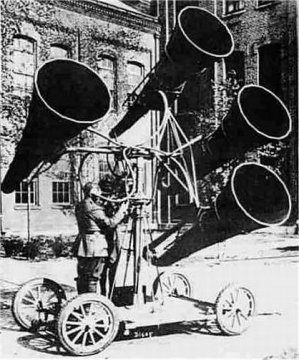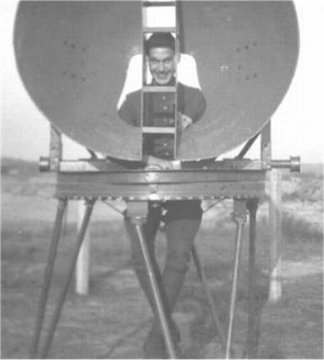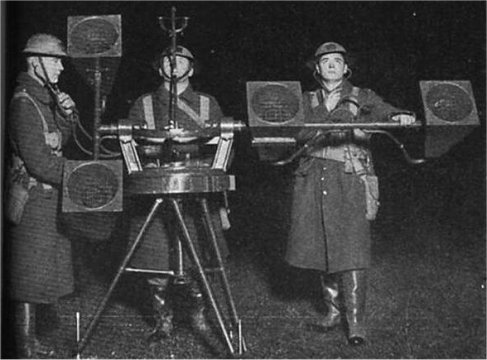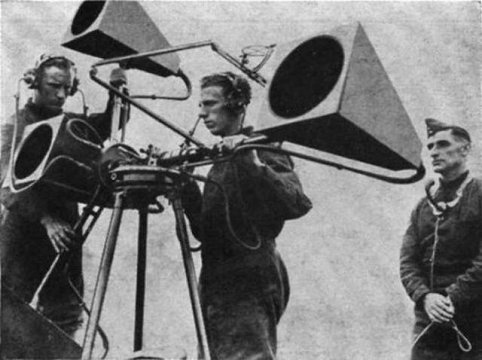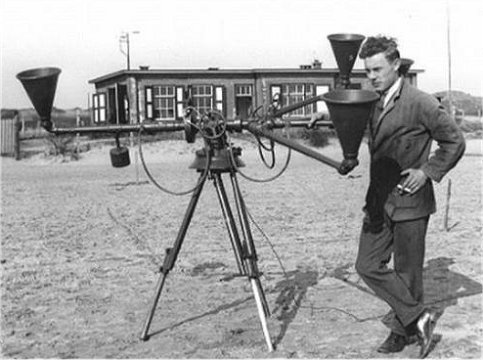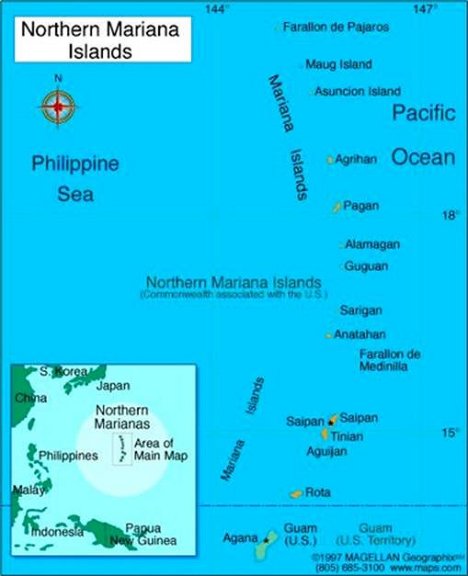 It's a small island, less than 40 square miles, a flat green
dot in the vastness of Pacific blue. Fly over it and you notice a
slash across its north end of uninhabited bush, a long thin line that looks
like an overgrown dirt runway. If you didn't know what it was, you
wouldn't giveit a second glance out your airplane window.
It's a small island, less than 40 square miles, a flat green
dot in the vastness of Pacific blue. Fly over it and you notice a
slash across its north end of uninhabited bush, a long thin line that looks
like an overgrown dirt runway. If you didn't know what it was, you
wouldn't giveit a second glance out your airplane window.
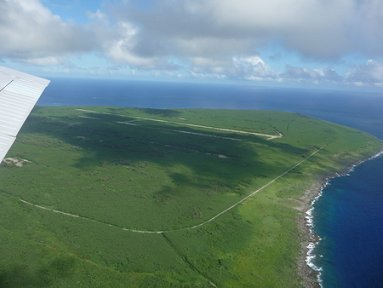
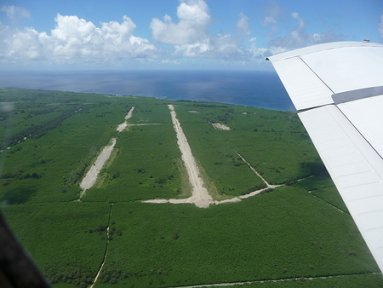 On the ground, you see the runway isn't dirt but tarmac and
crushed limestone, abandoned with weeds sticking out of it. Yet this
is arguably the most historical airstrip on earth. This is where
World War II was won. This is Runway Able:
On the ground, you see the runway isn't dirt but tarmac and
crushed limestone, abandoned with weeds sticking out of it. Yet this
is arguably the most historical airstrip on earth. This is where
World War II was won. This is Runway Able:
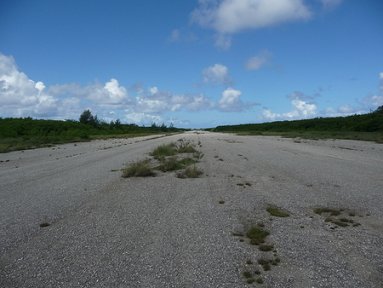 On July 24, 1944, 30,000 US Marines landed on the beaches
of Tinian. Eight days later, over 8,000 of the 8,800 Japanese soldiers
on the island were dead (vs. 328 Marines), and four months later the Seabees
had built the busiest airfield of WWII - dubbed North Field - enabling
B-29 Superfortresses to launch air attacks on the Philippines, Okinawa,
and mainland Japan.
On July 24, 1944, 30,000 US Marines landed on the beaches
of Tinian. Eight days later, over 8,000 of the 8,800 Japanese soldiers
on the island were dead (vs. 328 Marines), and four months later the Seabees
had built the busiest airfield of WWII - dubbed North Field - enabling
B-29 Superfortresses to launch air attacks on the Philippines, Okinawa,
and mainland Japan.
Late in the afternoon of August 5, 1945, a B-29 was maneuvered
over a bomb loading pit, then after lengthy preparations, taxied to the
east end of North Field's main runway, Runway Able, and at 2:45am in the
early morning darkness of August 6, took off.
The B-29 was piloted by Col. Paul Tibbets of the US Army
Air Force, who had named the plane after his mother, Enola Gay. The
crew named the bomb they were carrying Little Boy. 6½ hours
later at 8:15am Japan time, the first atomic bomb was dropped on Hiroshima.
Three days later, in the pre-dawn hours of August 9, a
B-29 namedBockscar (a pun on "boxcar," after its flight commander Capt.
Fred Bock), piloted by Major Charles Sweeney took off from Runway Able.
Finding its primary target of Kokura obscured by clouds, Sweeney proceeded
to the secondary target of Nagasaki, over which, at 11:01am, bombardier
Kermit Beahan released the atomic bomb dubbed Fat Man.
Here is "Atomic Bomb Pit #1" where Little Boy was loaded
onto Enola Gay:
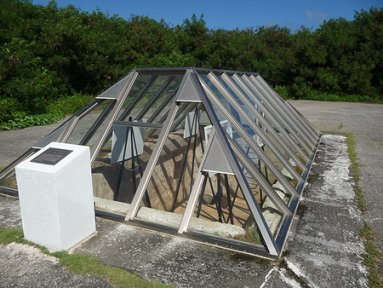 There are pictures displayed in the pit, now glass-enclosed.
This one shows Little Boy being hoisted into Enola Gay's bomb bay.
There are pictures displayed in the pit, now glass-enclosed.
This one shows Little Boy being hoisted into Enola Gay's bomb bay.
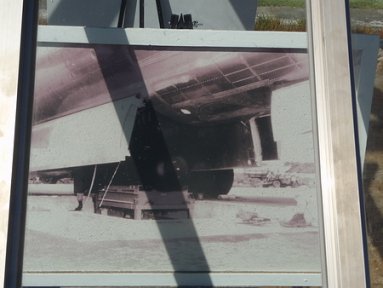 And here on the other side of ramp is "Atomic Bomb Pit #2"
where Fat Man was loaded onto Bockscar.
And here on the other side of ramp is "Atomic Bomb Pit #2"
where Fat Man was loaded onto Bockscar.
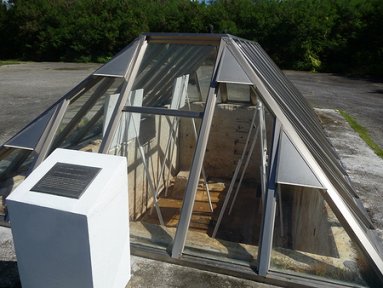
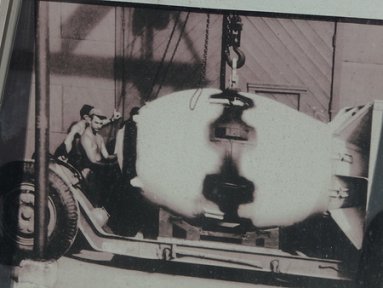 The commemorative plaque records that 16 hours after the
nuking of Nagasaki, "On August 10, 1945 at 0300, the Japanese Emperor without
his cabinet's consent decided to end the Pacific War."
The commemorative plaque records that 16 hours after the
nuking of Nagasaki, "On August 10, 1945 at 0300, the Japanese Emperor without
his cabinet's consent decided to end the Pacific War."
Take a good look at these pictures, folks. This
is where World War II ended with total victory of America over Japan.
I was there all alone. There were no other visitors and no one lives
anywhere near for miles. Visiting the Bomb Pits, walking along deserted
Runway Able in solitude, was a moment of extraordinarily powerful solemnity.
It was a moment of deep reflection. Most people,
when they think of Hiroshima and Nagasaki, reflect on the numbers of lives
killed in the nuclear blasts - at least 70,000 and 50,000 respectively.
Being here caused me to reflect on the number of lives saved - how many
more Japanese and Americans would have died in a continuation of the war
had the nukes not been dropped.
Yet that was not all. It's not just that the nukes
obviated the US invasion of Japan, Operation Downfall, that would have
caused upwards of a million American and Japanese deaths or more.
It's that nuking Hiroshima and Nagasaki were of extraordinary humanitarian
benefit to the nation and people of Japan.
Let's go to this cliff on the nearby island of Saipan
to learn why:
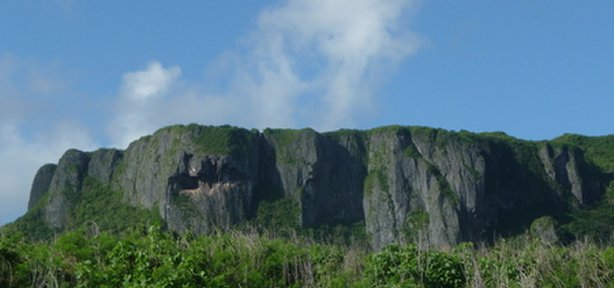 Saipan is less than a mile north of Tinian. The month
before the Marines took Tinian, on June 15, 1944, 71,000 Marines landed
on Saipan. They faced 31,000 Japanese soldiers determined not to
surrender.
Saipan is less than a mile north of Tinian. The month
before the Marines took Tinian, on June 15, 1944, 71,000 Marines landed
on Saipan. They faced 31,000 Japanese soldiers determined not to
surrender.
Japan had colonized Saipan after World War I and turned
the island into a giant sugar cane plantation. By the time of the
Marine invasion, in addition to the 31,000 entrenched soldiers, some 25,000
Japanese settlers were living on Saipan, plus thousands more Okinawans,
Koreans, and native islanders brutalized as slaves to cut the sugar cane.
There were also one or two thousand Korean "comfort women"
(kanji in Japanese), abducted young women from Japan's colony of Korea
to service the Japanese soldiers as sex slaves. (See "The Comfort
Women: Japan 's Brutal Regime of Enforced Prostitution in the Second World
War," by George Hicks.)
Within a week of their landing, the Marines set up a civilian
prisoner encampment that quickly attracted a couple thousand Japanese and
others wanting US food and protection. When word of this reached Emperor
Hirohito - who contrary to the myth was in full charge of the war - he
became alarmed that radio interviews of the well-treated prisoners broadcast
to Japan would subvert his people's will to fight.
As meticulously documented by historian Herbert Bix in
"Hirohito and the Making of Modern Japan," the Emperor issued an order
for all Japanese civilians on Saipan to commit suicide. The order
included the promise that, although the civilians were of low caste, their
suicide would grant them a status in heaven equal to those honored soldiers
who died in combat for their Emperor.
And that is why the precipice in the picture above is
known as Suicide Cliff, off which over 20,000 Japanese civilians jumped
to their deaths to comply with their fascist emperor's desire - mothers
flinging their babies off the cliff first or in their arms as they jumped.
Anyone reluctant or who refused, such as the Okinawan
or Korean slaves, were shoved off at gunpoint by the Jap soldiers.
Then the soldiers themselves proceeded to hurl themselves into the ocean
to drown off a sea cliff afterwards called Banzai Cliff. Of the 31,000
Japanese soldiers on Saipan, the Marines killed 25,000, 5,000 jumped off
Banzai Cliff, and only the remaining thousand were taken prisoner.
The extent of this demented fanaticism is very hard for
any civilized mind to fathom - especially when it is devoted not to anything
noble but barbarian evil instead. The vast brutalities inflicted
by the Japanese on their conquered and colonized peoples of China, Korea,
the Philippines, and throughout their "Greater East Asia Co-Prosperity
Sphere" was a hideously depraved horror.
And they were willing to fight to the death to defend
it. So they had to be nuked. The only way to put an end to
the Japanese barbarian horror was unimaginably colossal destruction against
which they had no defense whatever. Nuking Japan was not a matter
of justice, revenge, or it getting what it deserved. It was the only
way to end the Japanese dementia.
And it worked - for the Japanese. They stopped being
barbarians and started being civilized. They achieved more prosperity
- and peace - than they ever knew, or could have achieved had they continued
fighting and not been nuked. The shock of getting nuked is responsible.
We achieved this because we were determined to achieve
victory. Victory without apologies. Despite perennial liberal
demands we do so, America and its government has never apologized for nuking
Japan. Hopefully, America never will.
Want to read more about this mass suicide, and the Japanese
thinking during WWII?
http://en.wikipedia.org/wiki/Battle_of_Saipan
Oh, yes... Guinness lists Saipan as having the best, most
equitable, weather in the world. And the beaches? Well, take
a look:
